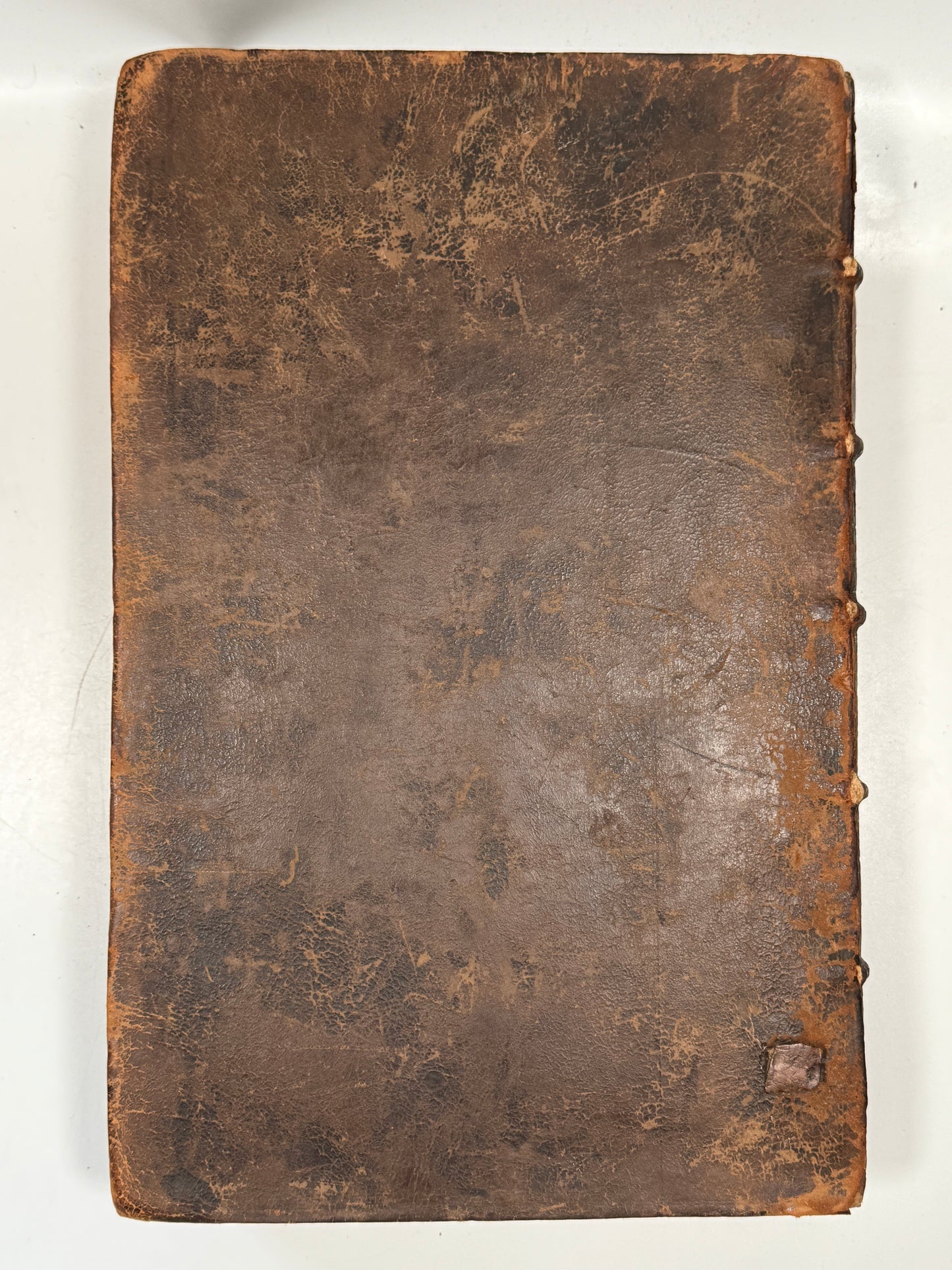The History of the Church of Scotland 1655 John Spotswood
The History of the Church of Scotland 1655 John Spotswood
Couldn't load pickup availability
The History of the Church of Scotland, Beginning the Year of our Lord 203, and continued to the end of the Reign of King James the VI. of ever blessed Memory. Wherein are described, The Progress of Christianity; The Persecutions and Interruptions of it; The Foundation of Churches; The Erecting of Bishopricks; The Building and Endowing Monasteries, and other Religious Places; The Succession of Bishops in their Sees; The Reformation of Religion, and the frequent Disturbances of that Nation, by Wars, Conspiracies, Tumults, Schisms. Together with great variety of other Matters, both Ecclesiastical and Politicall. By John Spotswood. London: J. Flesher for R. Royston, 1655, folio.
-------------------
FIRST EDITION, published sixteen years posthumously, of this notably comprehensive historical survey of the Church of Scotland written by the then Lord Archbishop of St Andrews and Privy Counsellor to King Charles I, this being printed in 1655 during one of the most turbulent times in British history following the execution of Charles I and during the Interregnum rule of Oliver Cromwell, just five years before the Restoration.
The author, John Spottiswood, was a leading figure in the episcopal establishment under James VI and Charles I. He supported the royal supremacy over the Church and the reintroduction of bishops into the Scottish Church, policies strongly opposed by Presbyterians and Covenanters. He was deeply involved in drafting the controversial Scottish Book of Common Prayer, whose imposition sparked riots and led to the Bishops’ Wars, the prelude to the English Civil War.
Spottiswood’s History was written as a defence of the episcopal church and royal authority in Scotland, portraying the bishops as the rightful spiritual governors of the Church. It traces Scottish Christianity from its early missionary origins through medieval Catholicism and into the Reformation, with a distinctly royalist and episcopalian interpretation.
Despite censorship, Cromwell’s government was beginning to tolerate certain kinds of historical or scholarly publications, provided they did not directly attack the Protectorate.
The printer, Royston skilfully framed Spottiswood’s work as a “history” rather than an explicit polemic, allowing it to pass through the press without immediate suppression.
-------------------
Size: 206 x 318 mm (approx.)
Condition:
[A6, a6, B-Z6, 2A-2Z6, 3A6, 3B4]
Contemporary full calf binding, leather a little rubbed, but generally attractive, joints cracked with front board detached. Original tooled red morocco label extant. Late 15th to early 16th century vellum MS binder’s waste visible at each end with extensively written neat writing. 3B4 is a blank and is extant here. Text collates as complete including the fine frontispiece and attractive dedication with the engraved portrait of Charles I. Exceptionally bright and clean throughout the text block. No attached bookplates. Save for the detached front board, an exceptional copy.






























